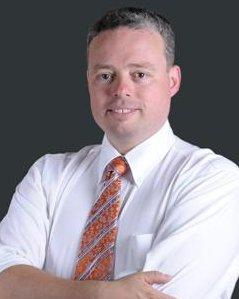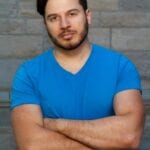In a marked departure from recent years, the Oct 27 annual general meeting of Pride Toronto was a largely collegial and even fun affair.
It was mostly a good-news meeting, with the board announcing its selection of Kevin Beaulieu as permanent executive director.
Mark Smith, Sean Hillier, Susan Gapka, Paola Solorzano and returning board members Chad Simon and Luka Amona were all elected to the board.
In another bit of good news, the board tabled its unaudited financial statements for 2011, showing that the organization ended the year with a $110,000 surplus, completely eliminating the accumulated $109,000 debt left over from 2010’s shortfall. Pride had originally planned to pay down the debt over three years.
Xtra’s Andrea Houston sat down with Beaulieu after the meeting.
Andrea Houston: The AGM was so positive and cheerful, such a difference from previous meetings.
Kevin Beaulieu: The meeting has gone very well. I was very touched by the positive reception I felt in the room, and I have to congratulate the board and my predecessor for the fabulous work that brought us to this point and made tonight a really special and positive thing for all of us.
You were really conflicted about taking this position. Why?
I loved the time I spent at city hall, specifically with Kristyn Wong-Tam. It was a hard decision to leave, especially a job that is rewarding. So leaving Kristyn’s office was a very difficult decision, but making the decision to come to Pride wasn’t so hard. There has been a lot of work in the past 18 months to turn the organization around and set a new direction and give the community faith in Pride again. Most importantly, the timing feels right.
Some people may question why Pride needs to continue. Well, I think of recent events, such as the young people in schools who can’t have GSAs; [queer youth] continue to suffer, and in some cases take their own lives. There is a role for Pride to play in making that situation better. Also, people in the trans community who have really been leading the way on fighting for human rights, saying, “We can come together and build an event and work together to create a space for all of us to participate and work together for love, acceptance and hope.” That’s what Pride is about — creating that space.
How many years have you been coming to Pride?
I came out a little later; it was in my 20s, in the mid-’90s. I remember my first Pride. I was so excited. I was freshly out. I was working that day. It was Sunday afternoon and I was just thinking about getting to Pride that whole day, and when I got here it was almost over. I caught the tail end of the parade and literally ran along the route trying to see everything that was happening. It meant that much to me, and it still means that much to a lot of people. We can’t take for granted what it is that Pride means.
Is that why the past few years have been so turbulent? How are you going to mend those wounds with the community?
I was here during those years. I was at Pride meetings and I was in the community. I heard what people want. They want a Pride that is present in the community, that listens and is sensitive to the diversity of our community. Sure, it throws a great event, but it’s also there throughout the year advocating for a better city, a better country and a better human rights regime for all of us.
The first thing is to connect with everyone. That work was begun by my predecessor, Glen Brown, who did a really terrific job bringing us to this point. There will be a lot of meetings, a lot of phone calls with people who have a lot to say. People are most upset when they aren’t given the opportunity to contribute to an organization, an institution and an event that means so much to them in their lives.
This meeting was quite a bit different from last year, with the QuAIA controversy, budget woes and internal corruption. What’s different now?
That’s been acknowledged. Pride has done a 180. It’s made an acknowledgment of the problems that have marked Pride’s recent past. Without acknowledging them, this organization couldn’t have moved forward. Tonight there were standing ovations; the board received a warm response from the members and attendees. It couldn’t be a more different night than one year ago.


 Why you can trust Xtra
Why you can trust Xtra


